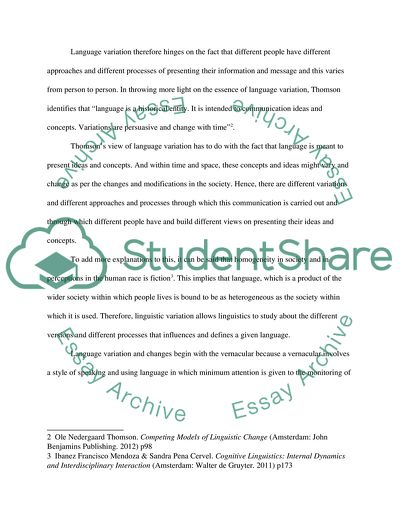Cite this document
(“Define and discuss the relationship between language variation, Essay”, n.d.)
Retrieved from https://studentshare.org/humanitarian/1635245-define-and-discuss-the-relationship-between-language-variation-language-attitudes-and-linguistic-discrimination-drawing-on-specific-examples-from-past-research
Retrieved from https://studentshare.org/humanitarian/1635245-define-and-discuss-the-relationship-between-language-variation-language-attitudes-and-linguistic-discrimination-drawing-on-specific-examples-from-past-research
(Define and Discuss the Relationship Between Language Variation, Essay)
https://studentshare.org/humanitarian/1635245-define-and-discuss-the-relationship-between-language-variation-language-attitudes-and-linguistic-discrimination-drawing-on-specific-examples-from-past-research.
https://studentshare.org/humanitarian/1635245-define-and-discuss-the-relationship-between-language-variation-language-attitudes-and-linguistic-discrimination-drawing-on-specific-examples-from-past-research.
“Define and Discuss the Relationship Between Language Variation, Essay”, n.d. https://studentshare.org/humanitarian/1635245-define-and-discuss-the-relationship-between-language-variation-language-attitudes-and-linguistic-discrimination-drawing-on-specific-examples-from-past-research.


